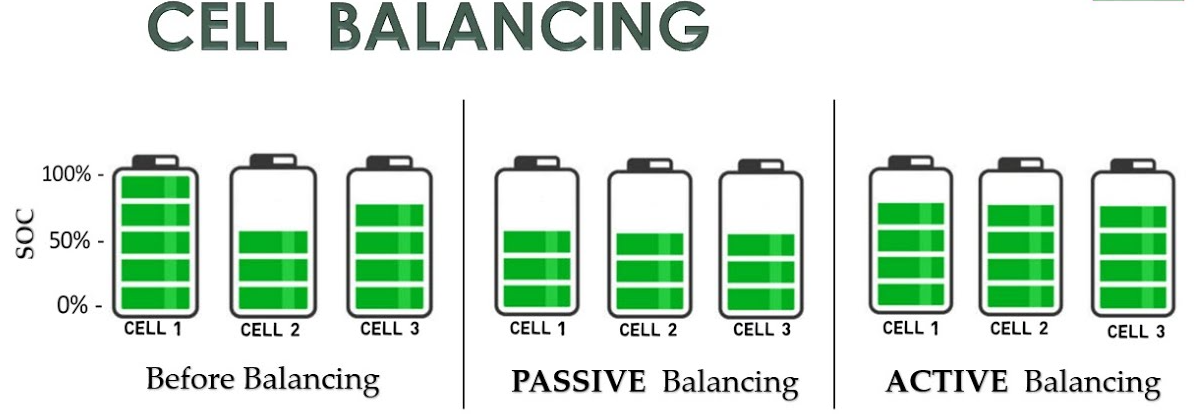
A Battery Management System (BMS) is an integral component of modern rechargeable batteries, serving as the brain that ensures their safe and efficient operation. A BMS oversees a multitude of functions that are crucial for maintaining the health and performance of a battery pack. Primarily, it safeguards the battery from operating outside its safe operating area by preventing conditions such as overcharging, over-discharging, and overheating. These protective measures are vital as they mitigate risks associated with battery failures, such as fires or explosions, thereby ensuring user safety.
Battery Cell Balancing: Optimizing Performance and Longevity
Battery cell balancing is a crucial process in managing the performance and longevity of battery packs, particularly in lithium-ion battery systems. It involves equalizing the charge levels of individual cells within the pack to ensure they operate harmoniously and efficiently. This balancing process helps prevent overcharging of some cells while others remain undercharged, which can lead to reduced capacity, degraded performance, and even safety risks.
Types of Battery Management Systems
Battery Management Systems (BMS) are categorized into two primary types: Active BMS and Passive BMS. Each type has distinct operational mechanisms and efficiency levels, impacting the performance and longevity of battery packs.
Active Balancing: Real-Time Adjustments for Optimal Performance
Active balancing is a sophisticated method that involves redistributing charge among cells in real-time to maintain uniformity in their state of charge. It employs dedicated balancing circuits and control algorithms within the Battery Management System (BMS) to actively transfer charge from higher-charged cells to lower-charged ones. This dynamic adjustment ensures that all cells operate within their optimal voltage range, maximizing the overall performance and lifespan of the battery pack. Active balancing is particularly effective in high-voltage battery systems and applications where precise control is essential.
Advantages:
- Precision: Active balancing allows for precise control of cell voltages in real-time, ensuring optimal performance and longevity of the battery pack.
- Efficiency: By actively transferring charge between cells, active balancing minimizes energy loss and maximizes the overall energy efficiency of the system.
- Flexibility: Active balancing can adapt to changing conditions and load profiles, making it suitable for a wide range of applications and battery chemistries.
- Safety: Real-time monitoring and control in active balancing help prevent overcharging and undercharging of cells, reducing the risk of safety hazards such as thermal runaway.
Disadvantages:
- Complexity: Active balancing systems are more complex and require additional components, increasing system cost and design complexity.
- Cost: The added complexity of active balancing translates to higher upfront costs compared to passive balancing solutions.
- Power Consumption: Active balancing circuits consume some power during operation, which may contribute to overall energy consumption, especially in standby or low-power modes.
- Maintenance: Active balancing systems may require more frequent maintenance and calibration to ensure proper operation and accuracy
Passive Balancing: Simplicity and Cost-Effectiveness
Passive balancing, on the other hand, relies on passive components such as resistors or diodes to equalize cell voltages. Unlike active balancing, passive balancing does not actively transfer charge between cells but instead dissipates excess energy from higher-charged cells as heat. While passive balancing is simpler and more cost-effective to implement, it is less efficient and may result in energy loss. However, passive balancing remains a viable option for low-power or cost-sensitive applications where the benefits of active balancing may not justify the additional complexity and expense.
Advantages and Disadvantages of Passive Balancing:
Advantages:
- Simplicity: Passive balancing systems are simpler in design and implementation, requiring fewer components and lower complexity.
- Cost-Effectiveness: Due to their simplicity, passive balancing solutions are generally more cost-effective to implement, making them attractive for low-cost or budget-conscious applications.
- Reliability: Passive balancing circuits have fewer active components, which may result in higher reliability and robustness in some environments.
- Low Power Consumption: Passive balancing circuits do not consume power during normal operation, contributing to overall energy efficiency and reduced power consumption.
Disadvantages:
- Limited Precision: Passive balancing relies on passive components to dissipate excess charge, which may result in less precise voltage balancing compared to active methods.
- Energy Loss: Excess energy dissipated as heat in passive balancing circuits represents energy loss, reducing overall system efficiency.
- Inefficiency with High Imbalance: Passive balancing may be less effective at equalizing cell voltages in cases of high voltage imbalance, leading to suboptimal performance.
- Incompatibility with High-Power Applications: Passive balancing may not be suitable for high-power or high-voltage applications where precise control and efficiency are paramount.
